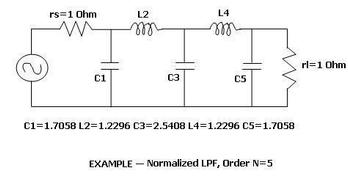LPF vs HPF vs BPF vs BSF: Filter Types Explained
Advertisement
This article explains the differences between LPF (Low Pass Filter), HPF (High Pass Filter), BPF (Band Pass Filter), and BSF (Band Stop Filter) filter types. These filters are essential components in communication systems, serving various functions.
Filters can be broadly classified into two types based on their placement in the system: analog and digital. Digital filters operate on digital data, while analog filters operate on analog data. Let’s explore the basic differences between these fundamental filter types.
LPF (Low Pass Filter)
LPF stands for Low Pass Filter. This type of filter allows lower frequencies to pass through while blocking or filtering out higher frequencies.
How it Works: As illustrated in the figure below, an LPF passes frequencies from 0 up to a cutoff frequency (Fc) and attenuates all frequencies above Fc.

Fig.1 LPF
HPF (High Pass Filter)
HPF stands for High Pass Filter. Conversely to LPF, this filter allows higher frequencies to pass through while blocking or filtering out lower frequencies.
How it Works: As shown in the figure, an HPF passes frequencies from a cutoff frequency (Fc) and upwards, attenuating frequencies from 0 to Fc.

Fig.2 HPF
BPF (Band Pass Filter)
BPF stands for Band Pass Filter. This filter allows a specific band of frequencies to pass through while blocking frequencies outside that range.
How it Works: The BPF passes frequencies between a lower frequency (F1) and an upper frequency (F2). It rejects frequencies from 0 to F1 and any frequencies above F2.

Fig.3 BPF
BSF (Band Stop Filter)
BSF stands for Band Stop Filter. Also known as a Notch Filter. This filter blocks a specific band of frequencies while allowing frequencies outside that range to pass through.
How it Works: The BSF blocks frequencies between F1 and F2 and passes frequencies from 0 to F1 as well as from F2 and above.

Fig.4 BSF
Advertisement
 RF
RF







